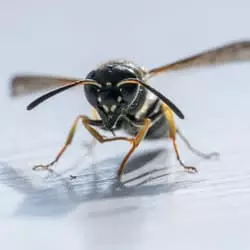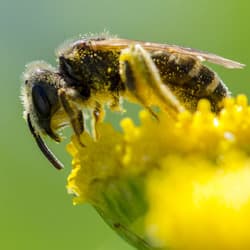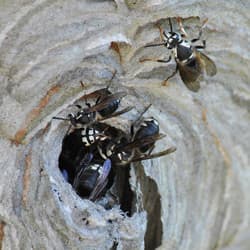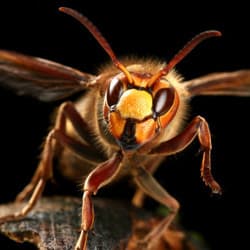The final weeks of summer are here, and that means it is time to enjoy as much of the warm sunny outdoor weather as possible. There a few weekends left to dine on hot dogs, hamburgers, pasta salad, and deviled eggs, and to go with family and friends to local fairs and festivals. It is important to remember that if precautions are not taken, stinging insects like wasps, yellow jackets, and hornets may also join in uninvited and ruin your outdoor fun.
Not only are we trying to squeeze in the most of the last days of summer, but so are stinging insects. In the late summer and early fall stinging insects are more active and ornery because they are stressed out about making sure they find and gather enough food to keep their queens well-nourished during the cooler weather months of the fall and winter seasons. This is the time of year to be aware of stinging insects and to try and avoid as much contact with them as possible.
Stinging insects like yellow jackets and others are particularly pesky pests at outdoor events and cookouts because most of them like to feed on the proteins and sweets that we also like to feed on. They are attracted to open containers of sweet drinks and plates of grilled food. Some things you can do to help protect yourself and your guests at cookouts and other outdoor events include:
- Make sure to provide trash cans with tight fitting lids for people to throw their empty plates and cups in.
- If possible provide cups that have lids on them.
- Go around and clean up any food and plates that have been left behind during the party.
- Place food inside, have people fill up their plates inside, and then come outside to sit, eat, and mingle.
In addition to protecting your guests and your family at outdoor events, there are many things that you can do around your property to help deter stinging insects from becoming an issue whether it is cookout season or not.
- Remove old tree stumps, fallen trees, or piles of debris that stinging insects could use to nest in.
- Limit the amount of flowers and other colorful landscaping that you have planted on your property.
- Place outdoor trash cans away from the exterior of your home.
- Make sure that gutters are not clogged and that they are draining water away from your home.
- Make sure that screens are intact, caulk spaces found around windows and doors, and place caps on chimneys to help prevent stinging insect from getting inside and nesting within your home.
If stinging insects have created a nest in close proximity to or actually on your home or have become particularly aggressive, the best way to deal with them is to call a professional. Their stings can be very painful and their venom can cause severe allergic reactions in some people; because of these dangers, it is best to leave controlling stinging insects up to professionals who are experienced in dealing with them.
At Russell’s Pest Control, our stinging insect professionals have the experience, equipment, and knowledge needed to safely remove dangerous stinging insects nest from your property. Our Power Platinum program provides year-round protection for your home and family against a wide variety of pests including stinging insects. Contact us today, for more information about our stinging insect control services and enjoy the rest of your summer, free of stings!



